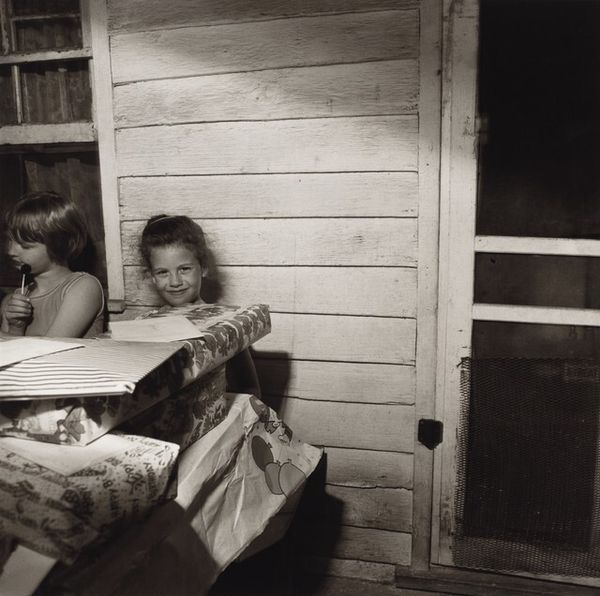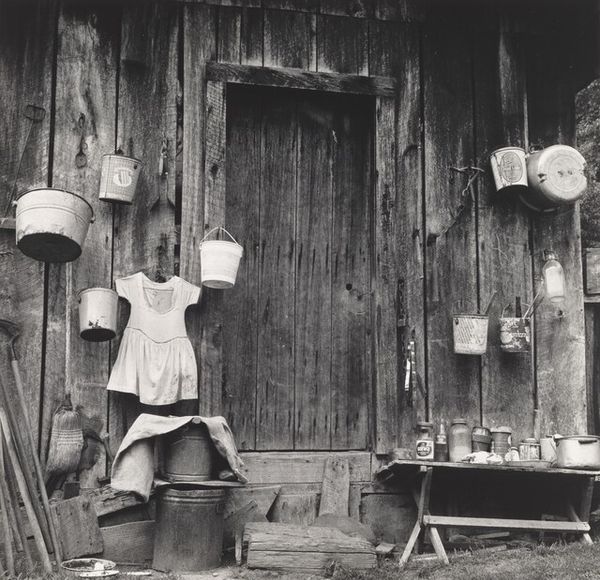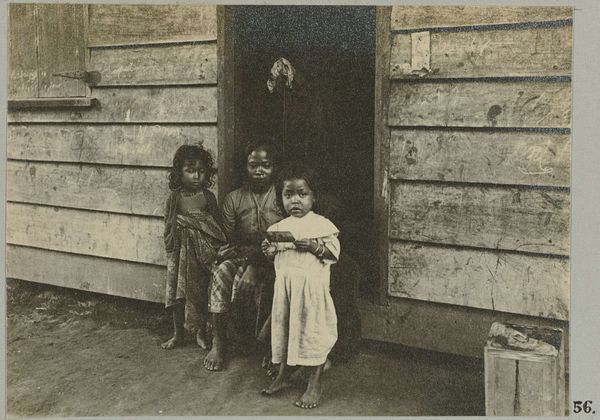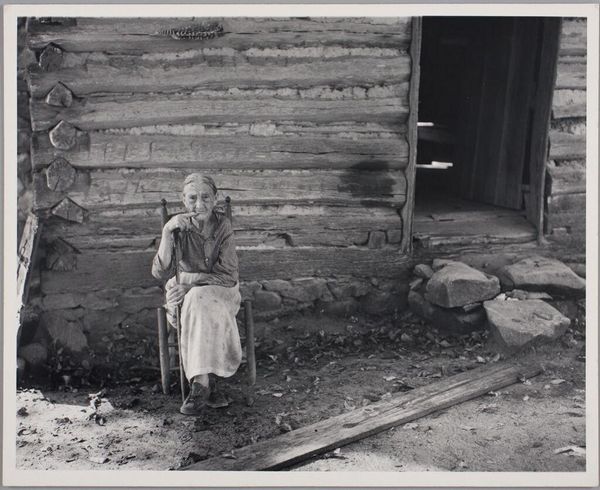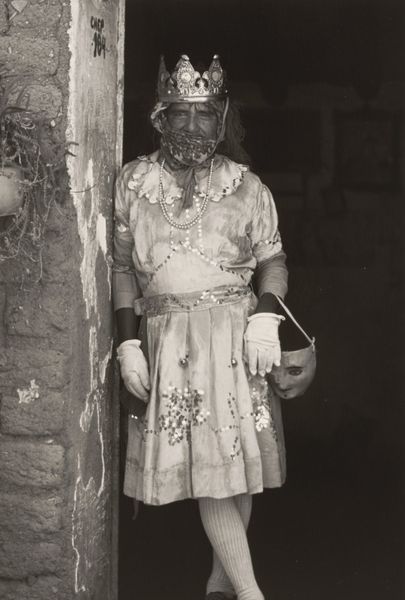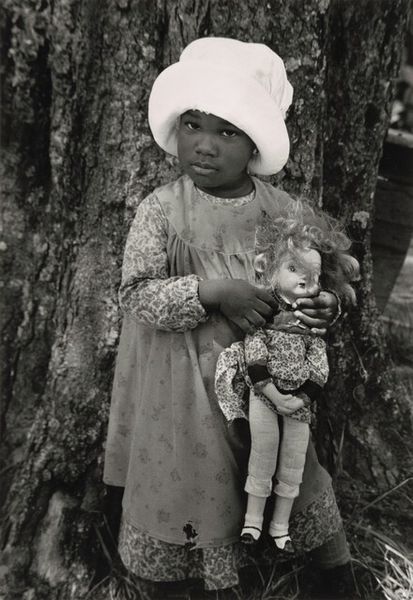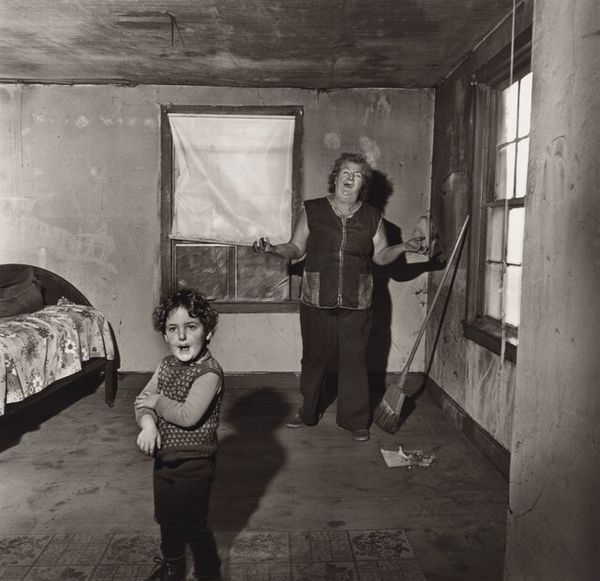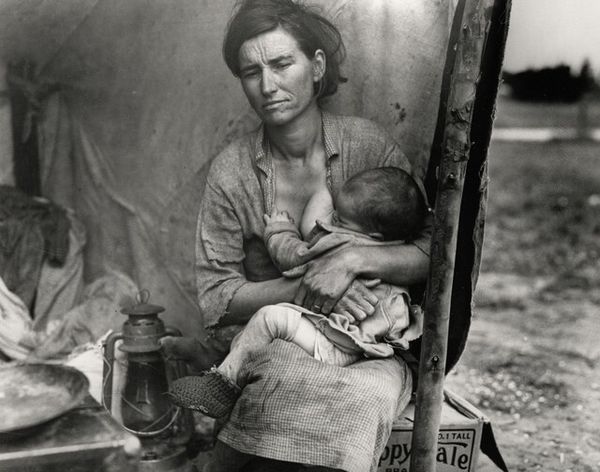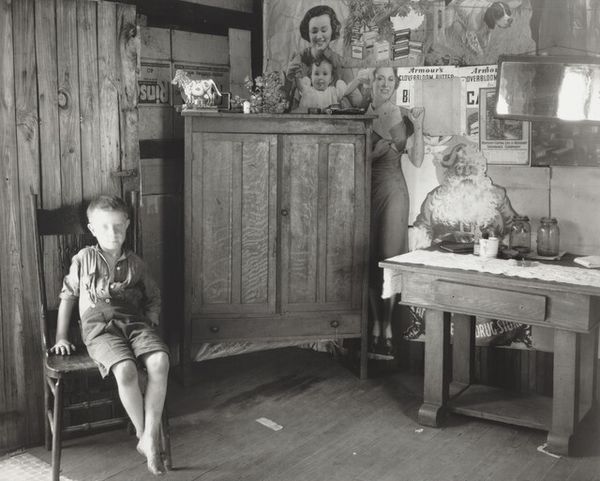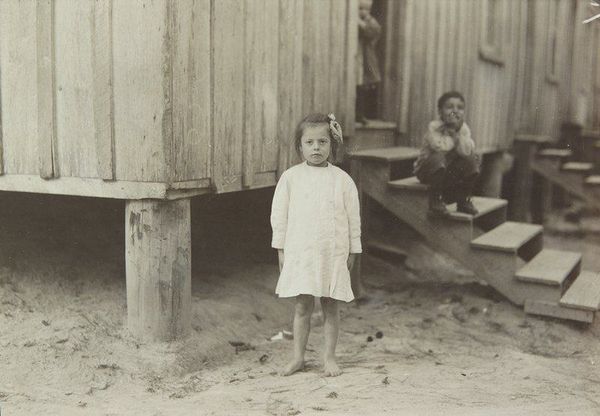
photography, gelatin-silver-print
#
portrait
#
black and white photography
#
pictorialism
#
black and white format
#
archive photography
#
photography
#
historical photography
#
black and white
#
gelatin-silver-print
#
monochrome photography
#
monochrome
#
realism
Dimensions: sheet (trimmed to image): 21.2 x 15.8 cm (8 3/8 x 6 1/4 in.) mount: 34.5 x 27.1 cm (13 9/16 x 10 11/16 in.)
Copyright: National Gallery of Art: CC0 1.0
Curator: Here we have Alfred Stieglitz’s gelatin-silver print, “Black Forest Girl,” believed to have been taken sometime between 1894 and 1934. Editor: The first thing that strikes me is the weight of it. The dark doorway, the rough wood, even the heavy dress and full pail – everything feels substantial, rooted in place. Curator: Absolutely. Stieglitz, a key figure in pictorialism, often sought to elevate photography to the status of fine art, and here, the meticulous detail captures a specific social context, doesn't it? The girl, her traditional garb... Editor: It's clearly staged, though. You see how her dress hangs, the deliberate placement near the doorway... It makes me think about the labor involved – not just hers, hauling the pail, but also Stieglitz's: setting the scene, processing the gelatin silver. This is not a snapshot; it’s a constructed reality meant to signify a life tied to production and traditional values. Curator: Exactly! Think about the romanticized notions of rural life, the idealized image of women connected to nature that permeated European art at the time. Stieglitz both participates in and, perhaps, subtly questions this trope. Consider her expression – it’s far from blissful. Editor: Yes, there’s a quiet defiance, maybe even weariness in her gaze. It raises questions about exploitation of labor, particularly gendered labor. The "Black Forest Girl" becomes a symbol not only of picturesque Germany, but also of a certain class structure made visible through dress and possessions – the simple pail, her worn shoes. Curator: And by extension, the photographer's own social standing, doesn't it? His ability to represent this girl, framing her narrative. It’s about who has the power to represent whom and how. Editor: The photograph’s material presence reinforces that power dynamic, especially when viewed today in the context of labor debates, material culture, and post-colonial frameworks. What at first appears to be a simple image actually has layers of meaning. Curator: Precisely. It speaks volumes about constructed identity and the weight of historical representation. Editor: For me, seeing the process behind that construction only reinforces the questions raised by her quiet gaze.
Comments
No comments
Be the first to comment and join the conversation on the ultimate creative platform.


